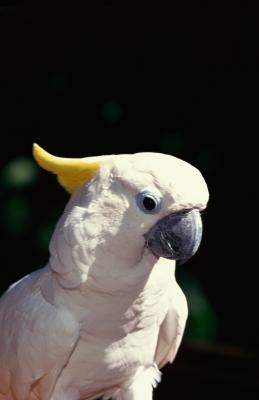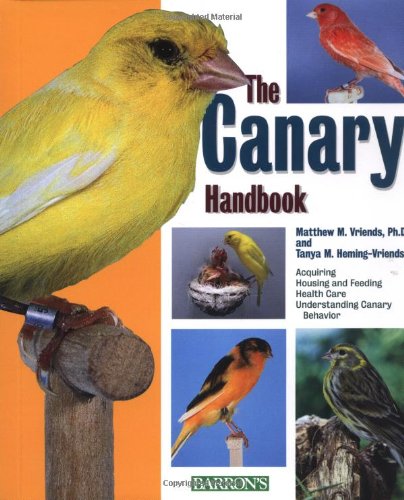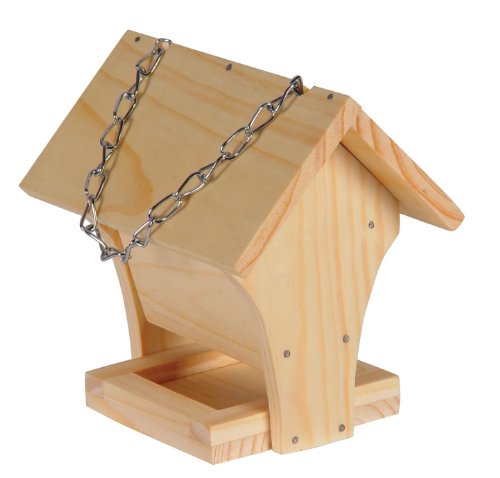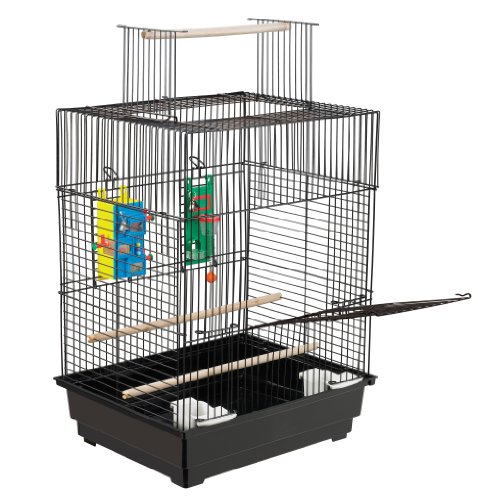
Canaries (Serenus canaria) are a type of finch. They are a great bird for someone who is just starting out in cage birds as they are relatively easy to look after. They are entertaining and attractive and their song is uplifting and enjoyable. But, if you thought a canary was just a yellow bird, you are sadly mistaken.
Canaries are often divided into three groups. These groups are Type, Colour and Song. Type birds are judged on their size and shape with colour and singing ability of little importance. With the Colour group, colour is all important and in the Song group, the ability to thrill with its singing is the only criteria of a 'good' bird.
The frilled canary is part of the 'Type' group – a sub-group if you like. Frilled canary breeds are not widely available nor well known. The name comes from the fact that the feathers, instead of lying close to the body, turn up and out giving a frilled appearance. Only some parts of the plumage may be frilled.

Of the frilled breeds, the Parisian Frill is possibly the most impressive. It averages 6 ½ inches in size with some specimens reaching 8 ½ inches. The average bird is about the same as a Yorkshire but the frilling creates the illusion of a bigger bird. The only feathers not frilled on the Parisian are the flight and tail feathers. The plumage on the head is modified and referred to as a helmet. Frilling on the forehead is called the cap. This should not be confused with the cap of the crested breeds. Fluffy feathers adorn the cheeks and side of the head and there is a collar of plumage around the neck. The 'craw' is the frilled plumage on the upper chest. The thighs have 'breeches' and the lower chest and belly sport side fins. The back is covered by the mantle. In the very best of the Parisian frill birds, even the toes have corkscrew nails.
Similar to the Parisian is the Padovan. However the Padovan has no helmet, cap or cheek feathering. It has a daisy cap, similar to the Gloster. Uncapped birds (consorts) are kept as well. Padovans only come in clear colours although the cap may be grizzled.
Milanais canaries are red factor frills, similar to the Parisian. Show specimens should not have corkscrew toenails.
The North and South Dutch Frills have almost nothing in common with each other. The North is of medium size with a mantle, craw and side fins. Thus the head, neck, belly and thighs are of 'normal' feathering with the frilling round the middle of the bird. It has a neat head and the stance is that of a regular canary.
The South Dutch Frill has the same frilling as its northern brother. It is more lightly built than the North and can appear emaciated. When erect, it is much taller than the North Dutch. It is sometimes referred to as a 'bird of position' rather than a true 'Type' canary. A good bird will hold its legs and body perpendicular to the perch with the head and neck held horizontally, forming a right angle with the line of the legs and body, giving it a hunch-backed stance. The narrow head and long, thin beak contribute to a snake-like look.
The Belgian is what is known as an 'Old Continental' breed and is important for the influence it had on the development of some English breeds. It has a small, neat head and long, slender neck. The body is long and tapering. Long, compact wings are carried close to the body. The tail is long and narrow and the legs long and straight. The Belgian Fancy is another that has been produced for its unusual stance. When perched, the top third (roughly) of the bird is on a horizontal plane. The high, prominent shoulders give the bird a hunched back appearance.
The Scots Fancy, also known as the Scottish canary, 'Bird o'Circle' or 'Glasgow Don' was developed from imported Belgian birds during the early 1800s. By the 1830s, development in Glasgow and central lowland Scotland had resulted in a truly unique specimen. An ideal Scots Fancy will have the form of a circle ie a line drawn from the tip of the beak through the head, body and to the tip of the tail should follow the arc of a circle.

The Italian canary breed, Gibber Italicus (see above), is probably the most bizarre of the canary breeds. An emaciated form is the norm, even more so than the half-starved appearance of the South Dutch. The stance and feathering is similar. It has been closely inbred and has the same distinctive stance as the Belgian Fancy. However, it has sparse plumage with frills on the shoulders, flanks and breast. There is so little feathering on the breast that the breast bone is exposed. The thighs are largely unfeathered too.
The frilled canaries are a very special group of the wonderful canary.
 Which Birds Emit Dander?
Which Birds Emit Dander?
Which Birds E
Which Birds Emit Dander?
Which Birds Emit Dander?
Which Birds E
 A Beginners Guide to Keeping Canaries
A Guide to Keeping CanariesC
A Beginners Guide to Keeping Canaries
A Guide to Keeping CanariesC
 How to Make Edible Bird Houses
We all love to feed the bird
How to Make Edible Bird Houses
We all love to feed the bird
 Tips for Keeping and Teaching Your Pet Birds to Talk
Cockatiels, more commonly kn
Tips for Keeping and Teaching Your Pet Birds to Talk
Cockatiels, more commonly kn
 The Hamburg Chicken
Poultry BreedsThe Hamburg Ch
The Hamburg Chicken
Poultry BreedsThe Hamburg Ch
Copyright © 2005-2016 Pet Information All Rights Reserved
Contact us: www162date@outlook.com